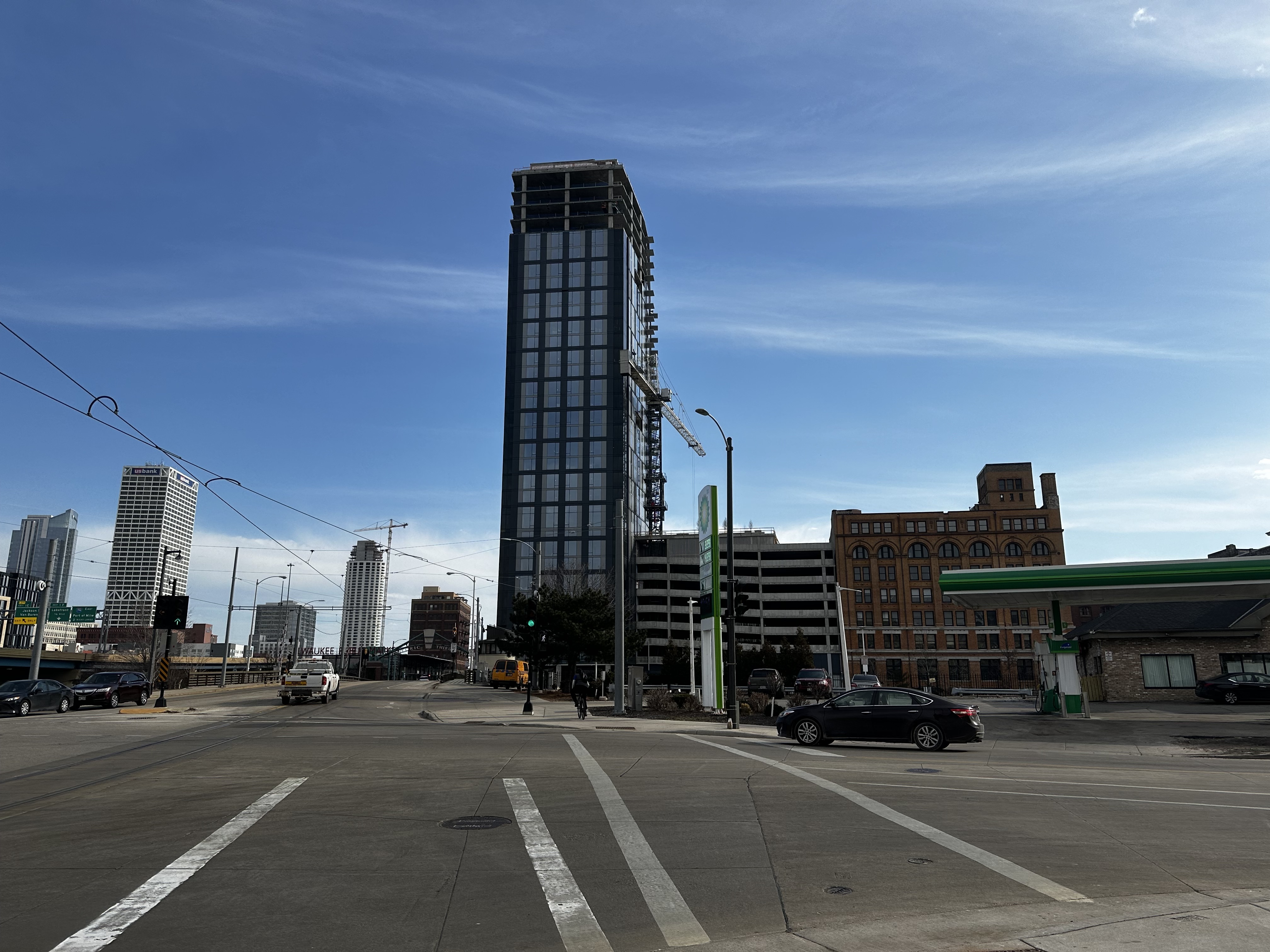The removal of Interstate 794 in downtown Milwaukee would increase daily traffic counts on Clybourn Street significantly, and state planners are exploring options to avoid logjams when its bridge over the river opens for boats.
Clybourn Street is currently a one-way street running in the shadow of Interstate 794’s elevated bridges. In early summer 2022, the Department of Transportation counted about 6,200 daily cars crossing its bridge over the Milwaukee River. Clybourn Street's total traffic counts are currently low, but could increase to about 26,000 cars daily under the most likely option to remove I-794 entirely, according to information the DOT released in August.
If I-794 is removed or redesigned, Clybourn Street would be rebuilt as a wider two-way boulevard to handle more traffic.
Those raising concerns about removing I-794 have argued Clybourn Street will experience car congestion when its bridge opens for boats on the river. The Clybourn Street bridge opens about 2,000 times a year for boats.
Wisconsin DOT planners discussed their efforts around the Clybourn Street bridge last week while updating a Milwaukee County Board committee on I-794. Mike Ernst, project manager on I-794 consulting firm HNTB Corp., said the project team assumes a new lift bridge would be built for Clybourn Street. Efforts are underway to minimize the number of times it would open for river traffic, he said.
“We are currently working on ideas for what we can do for that structure,” Ernst said.
That may mean rebuilding the bridge taller so it not need to open as frequently, said David Pittman, Wisconsin DOT project manager on the I-794 project.
The Milwaukee River is a federally regulated waterway, so it would require an act of Congress to remove the requirement for taller boats to pass, Pittman said.
The DOT had explored building a bridge tall enough to let all boats pass without needing to open and stop cars. However, a bridge that is tall enough, with inclines that comply with the Americans with Disabilities Act, may be so long that its structure blocks either Water Street east of the river, or Plankinton Avenue to the west, according to those preliminary studies from earlier this year.
Clybourn Street would see daily traffic increase to 26,000 cars under the DOT’s option of removing I-794 between Sixth Street and the northern terminus of the Hoan Bridge. According to last week’s presentation, that is the “most feasible” of the two options the DOT presented last summer to remove I-794 completely.
Several other options remain in play, and a final plan is to be selected later this year. Nine design concepts were shown last summer. State planners will narrow those down to four over the “next few months” for further public review, Ernst said.
The current range of options include rebuilding aging I-794 bridges with no design changes. That would maintain the current eight different access points to downtown.
Other options would redesign I-794, tearing it down and rebuilding it with a new, smaller system of elevated bridges. Those concepts would preserve about four access points to downtown, and open land downtown for public use or private redevelopment. It would not open as much land as removing the interstate bridges entirely.
The redesign concepts would also rebuild Clybourn Street as a wider, two-way boulevard to handle more traffic that now uses I-794. Cass Street would be extended south into the Third Ward to create a new local street connection.
